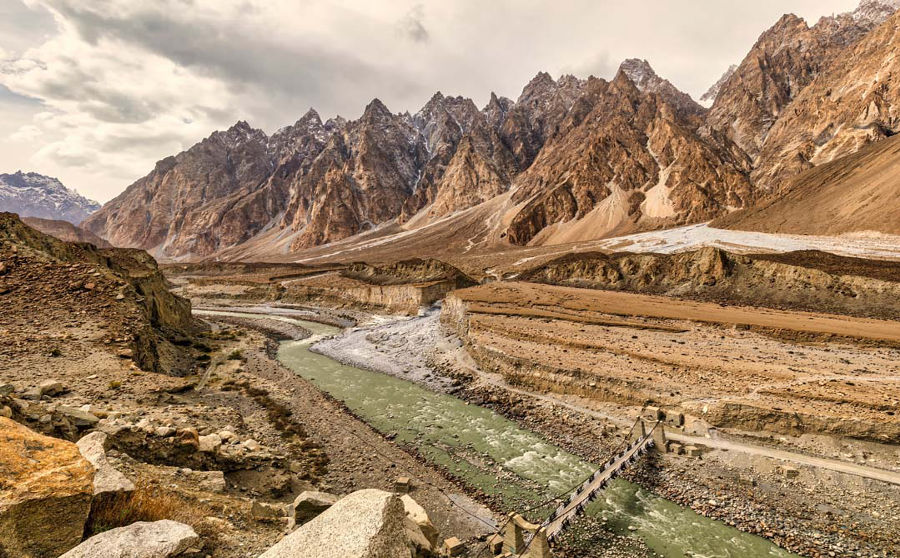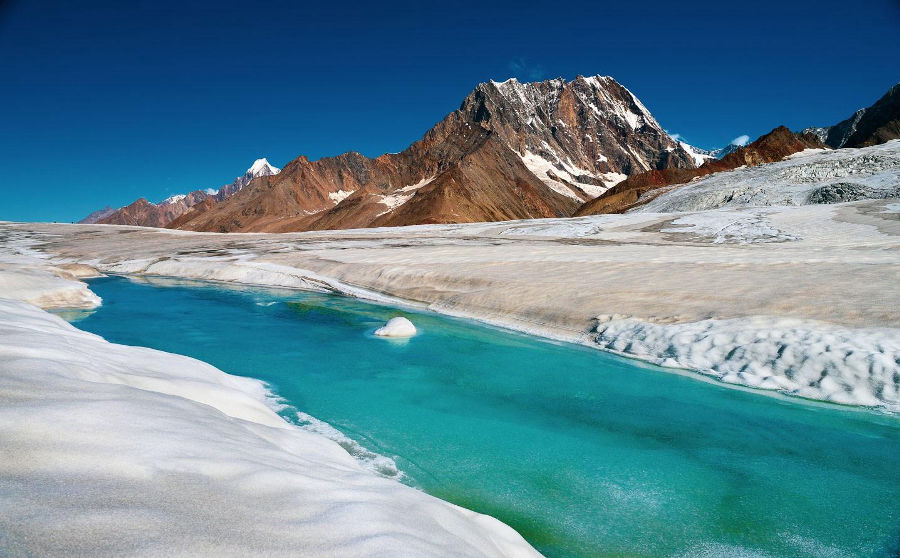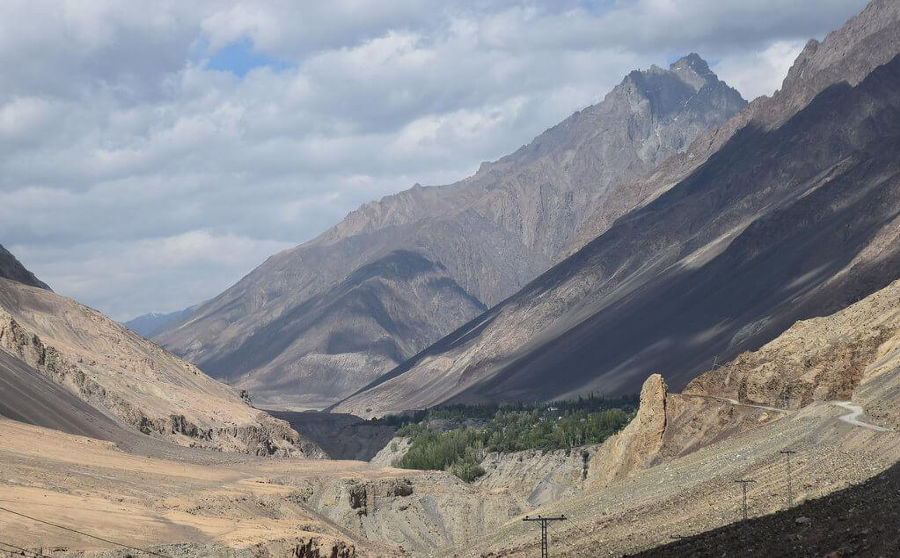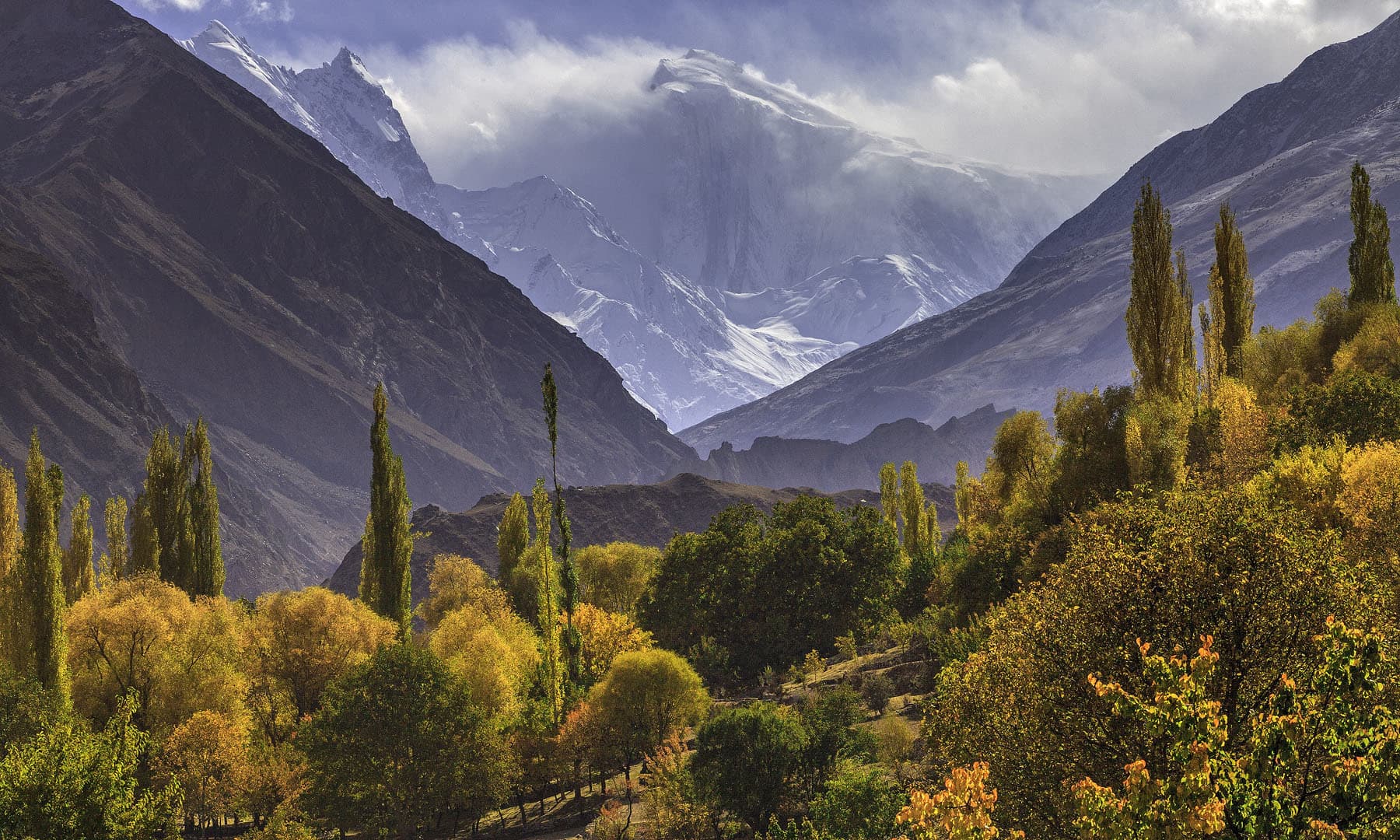Shimshal Valley, nestled deep within the Karakoram Mountains of Gilgit-Baltistan, Pakistan, is renowned as one of the most remote and rugged regions in the country. Often referred to as the “Valley of Mountaineers,” it has produced numerous accomplished climbers who have made significant contributions to Pakistan’s mountaineering legacy. The valley’s challenging terrain and high-altitude environment have shaped a community deeply connected to the mountains.
Location & Accessibility
Shimshal is situated in the Gojal tehsil of the Hunza District, at an elevation of approximately 3,100 meters (10,170 feet) above sea level. It is the highest settlement in the district and serves as a vital link between Pakistan and China. The valley encompasses an area of about 3,800 square kilometers and comprises four main hamlets: Farmanabad, Aminabad, Center Shimshal, and Khizarabad. The region’s population is around 2,000 residents, primarily of Wakhi descent, who practice Ismaili Shia Islam.


Accessing Shimshal Valley is an adventure in itself. The journey begins at Passu, a village on the Karakoram Highway. From there, a narrow, unpaved road stretches approximately 56 kilometers to Shimshal. This road, completed in 2003 after 18 years of collaborative effort between the local community and authorities, winds through steep cliffs, crosses rivers, and navigates rocky paths. The trip typically takes 3 to 4 hours, depending on road conditions. Travelers can arrange jeep rides from Passu, with departures often coordinated through local guesthouses. It’s advisable to reserve seats in advance, as only a few jeeps make the journey daily. The ride offers breathtaking views but requires a strong stomach due to the precarious nature of the road.
Mountaineering Legacy
Shimshal Valley’s reputation as a hub for mountaineering is well-deserved. It is home to several towering peaks, including Distaghil Sar (7,885 meters), Kunjut Sar (7,790 meters), and Minglik Sar (6,050 meters). These mountains attract climbers from around the world. The valley’s inhabitants have a long-standing tradition of mountaineering, with many local climbers gaining international recognition.
FUN FACT:
Before the road was built, people used to walk for 3 days to reach Shimshal!Notable figures from Shimshal include Samina Baig, the first Pakistani woman to summit Mount Everest and all Seven Summits. Abdul Joshi, known as the “Path Finder,” has achieved numerous significant climbs, including summiting Annapurna and Mount Everest. Qudrat Ali, a distinguished mountaineer, co-founded the Shimshal Mountaineering School, which has trained many aspiring climbers. These individuals exemplify the valley’s deep-rooted connection to high-altitude climbing.
Why Visit Shimshal Valley?
Natural Beauty & Trekking Opportunities
Beyond its mountaineering heritage, Shimshal Valley offers stunning natural landscapes. The valley is dotted with glaciers such as Yazghil and Malungutti, which are accessible through scenic treks. Shimshal Lake, located at the base of Minglik Sar, provides a serene setting for visitors. Trekking in the area allows adventurers to experience the pristine beauty of the Karakoram range.
Cultural Insights
The people of Shimshal are known for their hospitality and strong communal ties. The valley’s culture is deeply influenced by its mountainous environment, with traditional practices centered around herding yaks, goats, and sheep. The community’s resilience and self-reliance are evident in their ability to thrive in such a remote and harsh setting.
Trekking Paradise
For those interested in longer expeditions, the Shimshal Pass trek is a challenging route that connects Shimshal to the Wakhan Corridor in Afghanistan. This trek requires careful planning and permits, which can be arranged through local tour agencies.
If you’re into trekking and camping, this valley will steal your heart.
High-Altitude Pastures
In summer, locals move with their animals to Shimshal Pamir, a high-altitude pasture. You can join them or visit as a guest for an authentic experience.
Best Time to Visit Shimshal
- May to September is ideal.
- Roads are often blocked in winter due to snow.

Shimshal Valley FAQs
How do I get to Shimshal Valley?
Take the Karakoram Highway to Passu, then turn off towards Shimshal. The road is narrow and adventurous, so a 4×4 vehicle or local jeep is best.
Is the Shimshal road safe?
It’s considered one of the most thrilling roads in the world. It’s safe but not for the faint-hearted. Travel with an experienced local driver.
Do I need a permit to visit Shimshal?
No permit is needed, but registering at the police checkpoint is part of the process before entering the valley.
Are there guesthouses in Shimshal?
Yes, there are a few simple guesthouses and homestays offering basic facilities and warm hospitality.
Can I trek without a guide?
If you’re experienced, yes — but due to the remote terrain, hiring a local guide is highly recommended.
Is Shimshal good for first-time travellers?
If you love adventure and raw nature, yes! But it’s remote, so it’s better for those who enjoy off-the-beaten-path travel.






